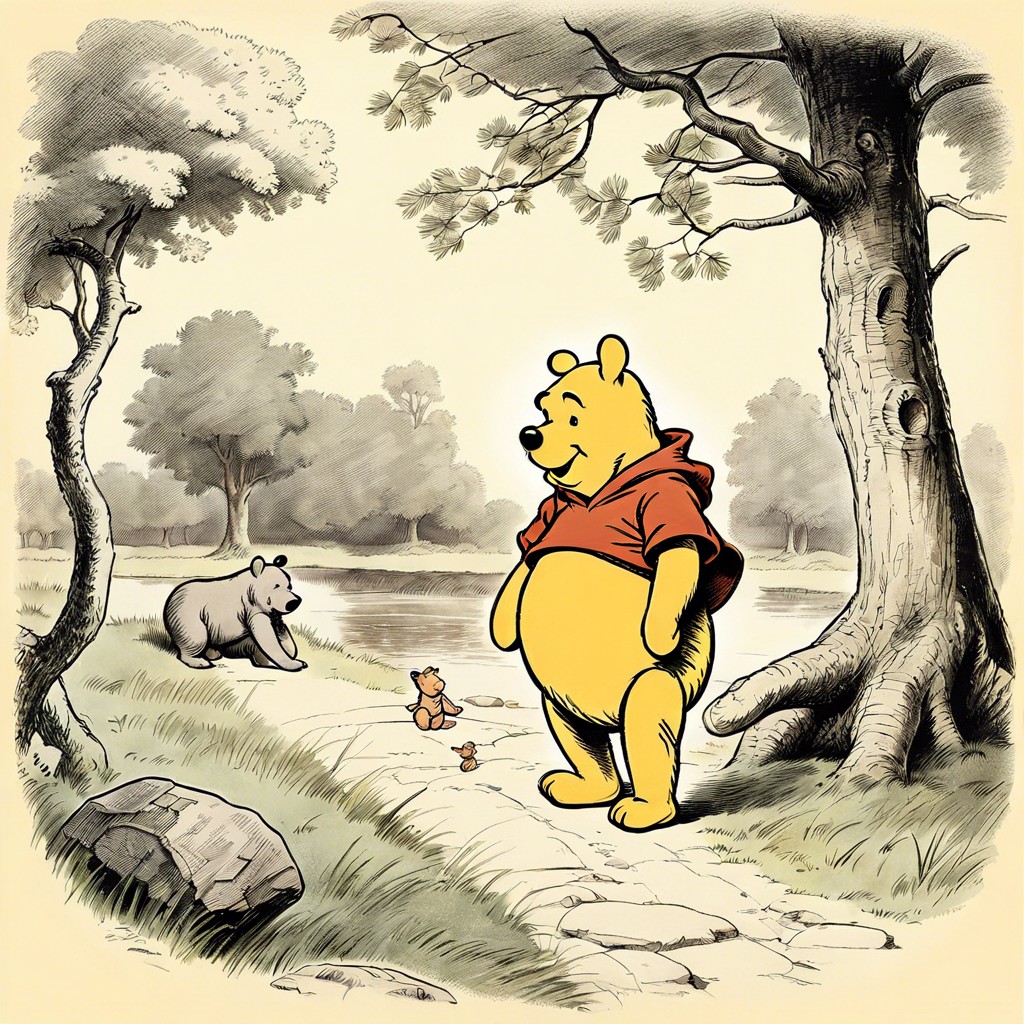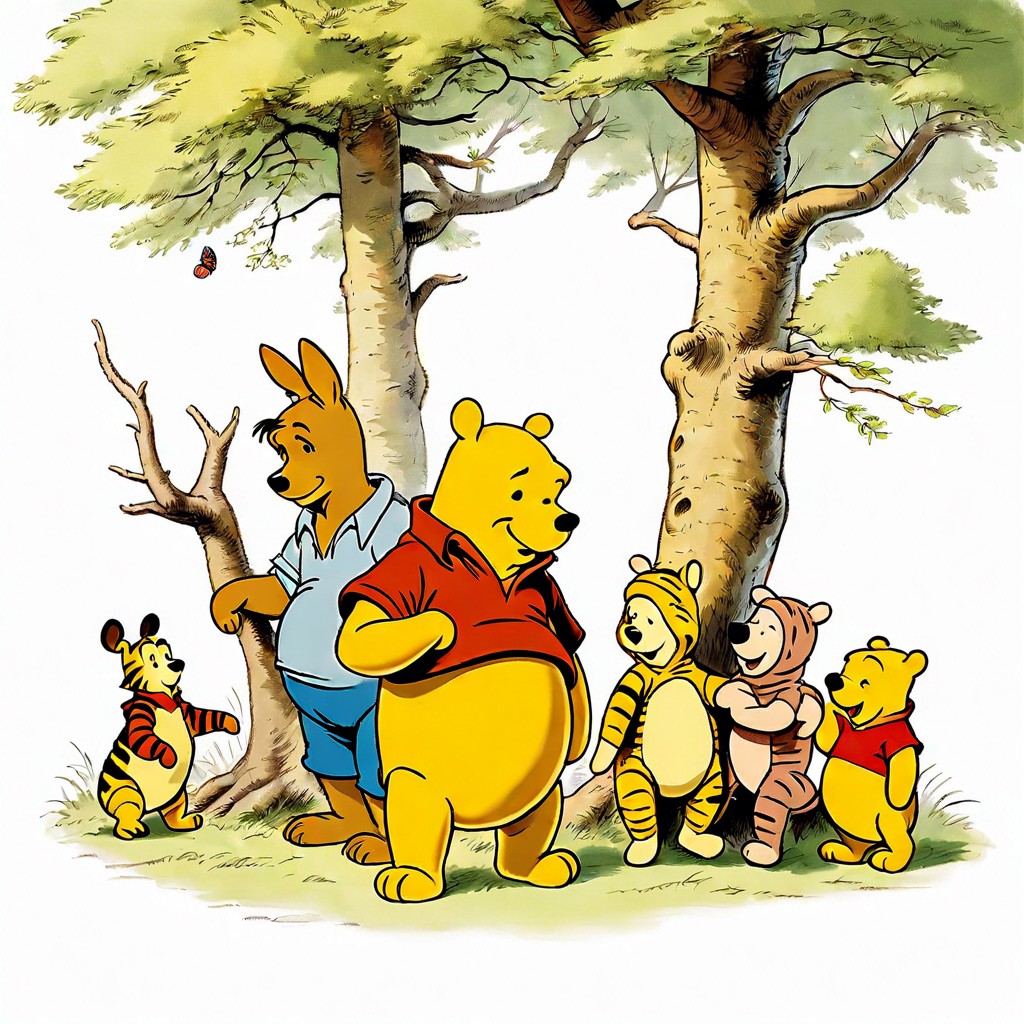Last updated on
Discover the timeless charm of Classic Winnie the Pooh merchandise and learn how to choose the best items for your collection or gift-giving.
Key takeaways:
- A.A. Milne created Classic Winnie the Pooh based on his son’s stuffed toys and penned the stories in a pastoral setting.
- The key characters in Classic Winnie the Pooh represent different personalities and teach important life lessons.
- E.H. Shepard’s illustrations are iconic and brought the whimsical world of Winnie the Pooh to life.
- Classic Winnie the Pooh explores themes of friendship, simplicity versus complexity, and acceptance.
- The impact of Classic Winnie the Pooh on children’s literature is profound, teaching valuable lessons in a relatable and engaging way.
Origin and Creation of Classic Winnie the Pooh

A.A. Milne first introduced Winnie the Pooh in 1926, drawing inspiration from his son, Christopher Robin Milne’s, stuffed toys. Christopher’s teddy bear, named “Winnie” after a Canadian black bear he often saw at London Zoo, and “Pooh,” a swan they met on holiday, combined to create the famous character. These stories were penned in a pastoral setting modeled after Ashdown Forest near Milne’s country home in East Sussex, which became the enchanting Hundred Acre Wood, home to Pooh and his friends.
As a former playwright and humorist, Milne infused the Pooh stories with whimsical wordplay, endearing character quirks, and a gentle narrative style, capturing the imaginations of both children and adults. The tales of Winnie the Pooh were initially crafted as bedtime stories for Christopher Robin, making their way into poetry books like “When We Were Very Young” and eventually culminating in a full collection of Winnie the Pooh adventures.
Key Characters and Their Roles

Winnie the Pooh, affectionately known as Pooh Bear, embodies simplicity and love. His adventures usually revolve around his quest for honey and his interactions with friends. Pooh’s gentle nature highlights themes of friendship and care.
Piglet, Pooh’s closest friend, symbolizes timidity but often displays bravery when it matters most. His character shows children that courage comes in all sizes.
Eeyore, the melancholic donkey, adds a note of realism to the tales, with his gloomy outlook often offset by the group’s efforts to cheer him up. His presence underscores the importance of supporting friends who are feeling down.
Tigger, known for his boundless energy and springs, represents the spirited, fearless side of childhood. He brings a dynamic energy to the stories, encouraging everyone to embrace their unique quirks.
Together, these characters create a dynamic environment where different personalities coexist and support one another, mirroring the complexities of real-life relationships.
Influence of E.H. Shepard’s Illustrations
E.H. Shepard’s illustrations brought the whimsical world of Winnie the Pooh to life, capturing the essence of A.A. Milne’s characters in a way that is both endearing and timeless. His artwork not only defined the visual representation of Pooh and his friends but also influenced how they were perceived by audiences worldwide.
Shepard’s gentle, detailed drawings of the Hundred Acre Wood provide a soft yet evocative backdrop that complements Milne’s narrative, blending the real and the imaginative seamlessly. His interpretations of Pooh, Piglet, Eeyore, and others are so iconic that they are almost universally recognized.
The approach Shepard took involved a careful balance of playfulness and nostalgia, evoking a sense of both comfort and adventure. This visual style helped to elevate the text, making the stories more engaging for children and adults alike.
Through his illustrations, Shepard also communicated the emotions and personalities of the characters, adding depth to them and enhancing the reader’s connection to the stories. Each drawing invites the viewer into the forest, encouraging exploration and imagination.
In essence, without Shepard’s artistic contributions, Winnie the Pooh might not have become the beloved classic it is today, demonstrating the power of visual art in storytelling.
Themes Explored in Classic Winnie the Pooh Stories
A.A. Milne used simple narratives in his stories to explore profound messages. One prominent theme is the importance of friendship. Throughout the adventures, the bond between Pooh and his friends underscores mutual support and understanding, highlighting how true friends are there for each other in times of need.
Simplicity versus the complexity of the adult world is another significant theme. Pooh’s uncomplicated outlook and joyful demeanor provide a stark contrast to the often overly complex adult perspective, promoting the value of cherishing the simple things in life.
Additionally, the theme of acceptance is woven through the tales. Characters like Eeyore, who might seem less exuberant than others, are equally loved and included by the group. This teaches the lesson that everyone’s unique traits are what make a group complete and diverse.
These themes, inherent in the adventures of Pooh and his friends, offer young readers lessons in empathy, appreciation, and understanding, making them timeless tales.
Impact On Children’s Literature
Winnie the Pooh has left an indelible mark on children’s literature by providing gentle lessons on friendship, kindness, and understanding. This lovable bear, along with his group of friends, teaches young readers about the strength of relationships and the importance of caring for others, all presented through engaging tales that blend humor with wisdom.
The simplicity of the narratives allows children to explore complex emotions in a digestible manner. Through adventures in the Hundred Acre Wood, youngsters learn to navigate their feelings and comprehend the nuances of social interactions.
Moreover, A.A. Milne’s approach to storytelling, emboldened by Shepard’s illustrations, encourages imagination. The stories’ serene pacing is perfect for bedtime readings, making them a lasting favorite in nightly family routines.
Ultimately, these stories foster a love of reading with their enduring and charismatic style, proving essential in a child’s literary journey.




